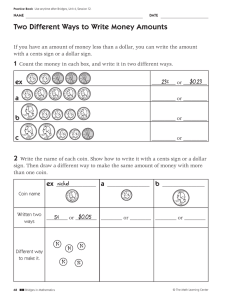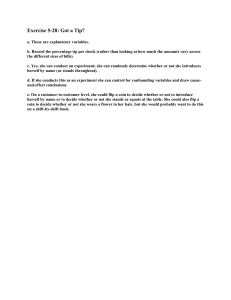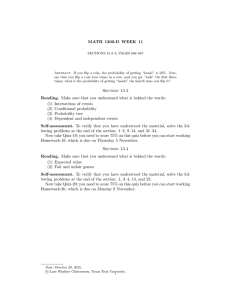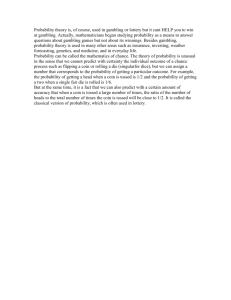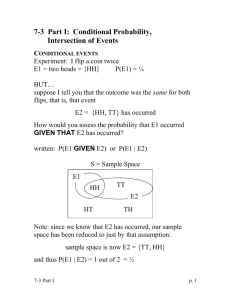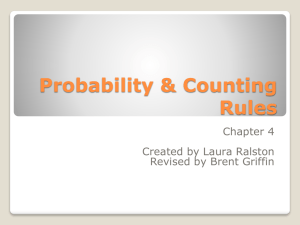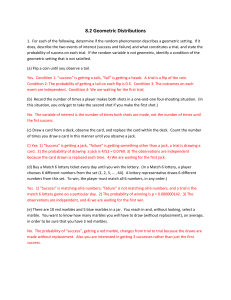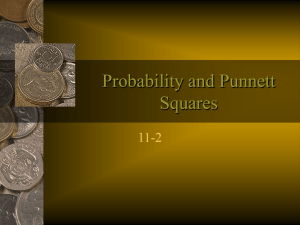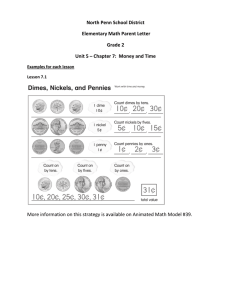6-7 Random Variables, Probability Distributions, Expected Value
advertisement
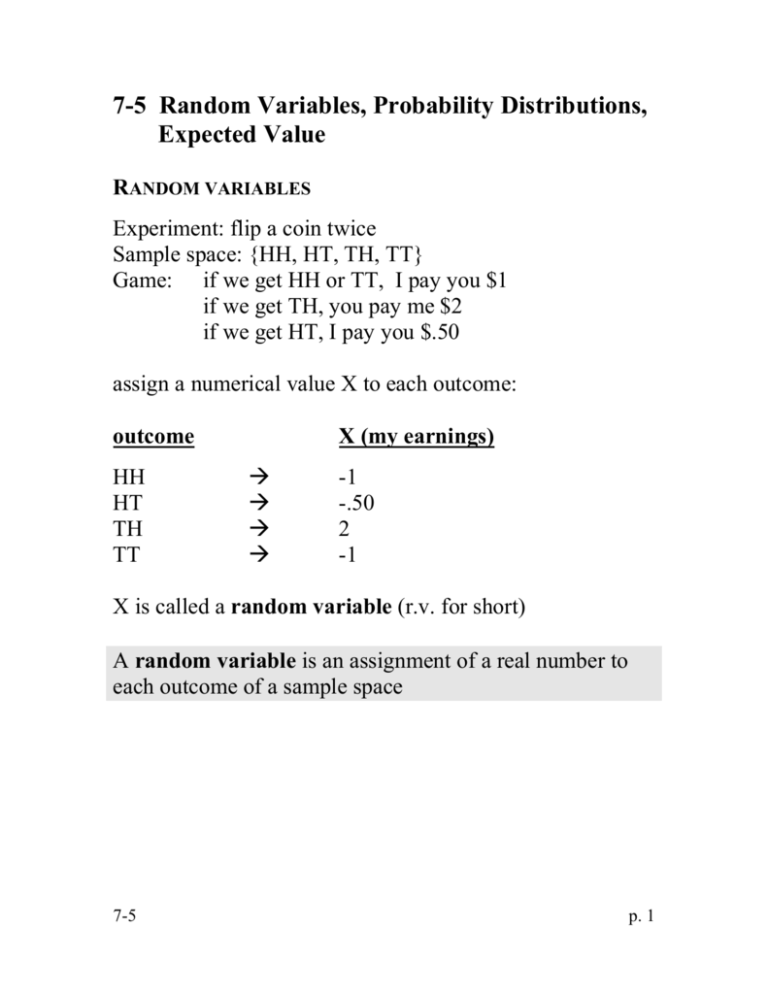
7-5 Random Variables, Probability Distributions,
Expected Value
RANDOM VARIABLES
Experiment: flip a coin twice
Sample space: {HH, HT, TH, TT}
Game: if we get HH or TT, I pay you $1
if we get TH, you pay me $2
if we get HT, I pay you $.50
assign a numerical value X to each outcome:
outcome
HH
HT
TH
TT
X (my earnings)
-1
-.50
2
-1
X is called a random variable (r.v. for short)
A random variable is an assignment of a real number to
each outcome of a sample space
7-5
p. 1
if we define a r.v. X on a sample space
it makes sense to talk about
the probability of various values of the r. v. X,
as opposed to the probability of outcomes:
P(X = -1) = ½
P(X = -.5) = ¼
P(X = 2) = ¼
can describe the probabilities using functional notation
call our function p:
p(-1) = ½
p(-.5) = ¼
p(2) = ¼
p is called the probability function or probability
distribution of random variable X
it is often useful to graph the probability distribution
here we show the graph in histogram form:
p(x)
1
.5
x
-1
7-5
-.5
2.0
p. 2
EXPECTED VALUE
Returning to our “game”:
Flip a coin twice:
if we get HH or TT, I pay you $1
if we get TH, you pay me $2
if we get HT, I pay you $.50
Our probability function is:
p(-1) = ½
p(-.5) = ¼
p(2) = ¼
because this is a game of chance
sometimes I will lose $1
sometimes I will lose 50 cents
sometimes I will win $2
Question:
what will be my average winnings (or loss) per game
if we play the game many times?
we can’t just average the -$1, -$.50 and $2
because they have different probabilities
instead, we compute a weighted average:
we will weight (multiply) each value of the r.v.
by its probability, and add them up:
(-1)( ½ ) + (-.5)( ¼ ) + 2( ¼ ) = $.125
on the average, I will lose 12 ½ cents per game
so if we play long enough, you will wipe me out!
Such a weighted average is called
the expected value of the r.v. X
7-5
p. 3
Expected value of a random variable
Suppose random variable X has probability function p:
p(x1) = p1, p(x2) = p2, . . . , p(xn) = pn
then the expected value of r.v. X is
E(x) = x1p1 + x2p2 + . . . + xnpn
If the Texas State Lottery pays $8,000,000 (as it does, on
average), what are your expected winnings on a $1 bet?
E(X) =
15,890,699
1
(7,999,999) +
(-1.00)
15,890,700
15,890,700
= .503 - 1 = -$.50
if 8,000,000 people play:
the lottery can expect to pay out
(8,000,000)(.50) = $4,000,000
(sometimes no winner!)
but there were $8,000,000 in bets
where'd the other $4,000,000 go?
7-5
p. 4
